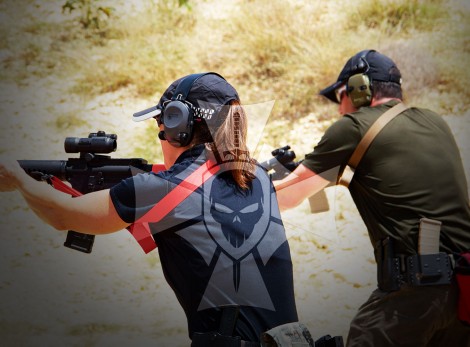Posted on: December 11, 2015 0
0

The question as to whether a person should invest in body armor or not comes up quite a bit in the training industry. For Military or Law Enforcement, this is an easy answer- and often the choice is dictated to you. However for law abiding concerned citizens, it can be a bit ambiguous.
The direct answer to this question is: you might not. But, you might not need to concealed carry everyday either. However, with concealed carry, if the day ever comes where you need that sidearm- you REALLY need it. That’s the meaning of being prepared to defend yourself and others. Not that you’re ready for the 99.9% of your life where everything goes according to plan, but for the 00.1% chance that things go bad.
This phrase often gets beaten like the proverbial dead horse and there definitely merit to it. But, this rant is directed at civilians- so let me add a caveat. There is a difference in Fundamentals training and Tactics training. When we train fundamentals, often fatigue and distractions can be our enemy. I’ve seen a lot of civilian shooters that aren’t interested in putting in the blood, sweat, and tears into building a solid base of fundamentals. Fundamentals training is where you establish your base to operate from. If you can’t master grouping in the prone with no gear on and no stressors, how do you expect to place accurate shots with full kit in the rollover prone, shooting under a vehicle? So- before you buy a new rifle and race to an “advanced” training course with a rough Zero on your weapon, just to watch a guy with a funny accent shoot with a plastic bag over his head while doing gymnastic tumbling- work on the basics. Rant off.
Training with gear on becomes important once the fundamentals are established for a number of reasons.
It gives you a chance to shake out your kit and see how well it works. This gives you great opportunity to reposition pouches, readjust hot the vest rides, or rethink your setup.
It gives you the opportunity to see how the body armor will affect you. For the majority of your conventional shooting positions, you won’t see much change other than perhaps bringing your buttstock in one click. You will need to adjust to the weight and pressure, expect to be a little fatigued or sore when you first start. Where you will really start to see differences is in compressed or unconventional shooting positions. You may find that some of the YouTube drills you’ve seen are completely impractical with gear on.
This is a contentious topic; let me start out by reminding the reader that this is directed at the civilian market segment. Undoubtedly, ceramic plates outperform steel in many ways. They are what is used by people who put their life on the line on a daily basis and have been proven in combat beyond all doubt. That being said, there are two downsides to them:
They need to be inspected regularly. Ceramic plate body armor is prone to cracking. The Army has ballistically tested cracked armor and found a low incidence of failure. But there is a reason the military tests it anyways, so you can’t really take gear advice and not the maintenance advice. The issue this presents to civilians is your availability to access these testing facilities. If you’re training for SHTF, then you really need to consider that point.
They can be tougher to purchase. Many of the companies that supply gear directly to the military often place self-imposed restrictions on selling to the civilian market. Even though the gear is completely legal for law-abiding civilians to own, they simply refuse to sell to you.
You will also need to consider the price. Level 4 Ceramic stand-alone plates run in the neighborhood of $500/ea. For front, back and side plates- your setup could run $1,600. In many cases for the civilian market, level 4 can be a bit of overkill. Level 3 armor will stop most all threats you might encounter. Comparatively, AR500 steel plates are in the $80 range. A full steel setup can be had for $230. The weights of both ceramic and steel setups are very similar. A Blackhawk lvl4 stand-alone front plate weighs 8.3lbs, AR500’s composite lvl4 weights 7.5lbs and their lvl3 comes in at only 5lbs (all plates weights were derived from shooter’s cut models). The steel plates are also significantly thinner than the ceramic variants with the ceramic at 0.67 and steel at 0.25. So, we are comparing different types and different levels of protection here. But the differences in price, weight, and bulk add up. You’ll have to weigh those factors against threat level when you decide to pull out your checkbook.
The easy answer is reputable companies, but your first step should be to check the National Institute of Justice website (http://www.nij.gov/topics/technology/body-armor/pages/welcome.aspx). There, you can peruse the registered list of companies and be sure that the vendor you are purchasing from adheres to the proper standards for testing and that your armor will actually perform against the threat level advertised.
If you’re reading this or are remotely interested in tactical training, then you probably want to add armor to your shopping list. If you just participate in tactical training for entertainment, great- its just another piece of gear to take to the range and vary your training with. If you train because you want to be prepared, then why don’t you have it already?